 
|
||||
|
|
SPENCER BREWER |
|||
|
Clocking in with 12-tracks, the 48 minutes Behind The Veil works on so many different musical levels that it never fails to impress the listener with its myriad of piano soundscapes. Americana, American folklore, echoes of 1980s New Age coming of age, Neoclassical and contemporary pop instrumental all merge together into one sonic composite. Although much of Behind The Veil is solo acoustic piano, the soundstage is rich and filled with many thought-provoking tracks and, the addition of the key New Age artists mentioned above gives further credence to Spencer Brewer’s legacy as an innovative instrumentalist. Thanks to the wonders of the internet, music fans can go back in time and gain a new appraisal of Spencer’s early works on the now defunct Narada Records label, which was a key source of New Age music throughout the 1980’s and 1990’s. While most of the tracks on Behind The Veil debut as new tracks, Spencer revives three of his most well-known tracks, including a fresh remake of his classic “Portraits” from his 1987 album of the same name. Start to finish, the 2023 CD / DL release of Behind The Veil is a welcome return from one of the most important artists from the dawn of the modern-day instrumental New Age music scene.
mwe3.com presents an interview with
Spencer Brewer: My grandmother, Alma Loveless Gertrude Brewer, we called her ‘Doody’, was not a piano teacher, she was just a piano player of boogie (boo-gee) woogie (woo-gee) music, and how she said it with her deep Southern accent, Southern blues and popular music of her day (1920s-50’s). When I would go to her house on the weekends, she would say to me ‘Speeansa, come on over here sit next to your Doody and give me a little sugar. I'll teach you how to play some boogie woogie music.’ She was very proud of the fact that she was a flapper in the 1920s. mwe3: What era of music did you grow up in? I kind of grew up in the Four Seasons through the Beatles era. Did the Beatles have a direct influence on you, melodically and did you have other favorites? Your music is very harmonious so you must have been influenced by the more melodic music makers? Spencer Brewer: I grew up in Texas, a fifth generation Texan. And was influenced by the early pop artists, the Beatles, Cream, Hendrix, the Doors, Led Zeppelin and I also really love listening to some of the other ones like Gentle Giant, ELP and then I discovered composer Bernard Herrmann, early electronic music and I was a big fan of Russ Garcia's album Fantastica from the 1950s. I have been influenced by a number of melodic music makers specifically film score composers like Ennio Morricone, Bernard Herrmann, Alexander Desplat, John Barry, Elmer Bernstein, Korngold and Max Steiner. I also loved The Moody Blues and added my record collection unusual records like Electric Gershwin to Switched on Bach. My record collection, before our barn fire in 1996, was in the thousands. I bought music from all styles and eras. I have been heavily influenced by pianists like Horowitz and Bernstein, Liszt and Chopin, Oscar Peterson and Bill Evans, Meade Lux Lewis and James P. Johnson, Debussy and Ravel. When I am in the sculpture barn making assemblage sculptures, I'm always spinning vinyl from old 78’s to the 70s.
Spencer Brewer: I started playing the piano when I was six or seven and started experimenting writing my own music around 11 or 12. My grandmother “Doody” was a flapper in the 1920’s and taught me how to play southern boogie-woogie and blues. When I stop taking lessons at 12 years old my mother still made me play an hour a day, so I was experimenting with all kinds of different styles of music. I kind of realized in my middle to late teens that that is what I wanted to do with my life – compose, play piano and be heard by lots of people. Very innocent at the time, but also very full of myself. mwe3: Behind The Veil is your first new album in 14 years. Is it your 15th solo album? What inspired you to make a comeback and what was the strategy in planning and recording the new album? On the new album you have some New Age musician legends such as Nancy Rumble and Paul McCandless and they appear on some tracks. Behind The Veil also features you with the Quartet San Francisco on the tracks. Spencer Brewer: Behind The Veil is my first record in 14 years and is my 15th album. I have produced or engineered a few hundred records, and this record is the most basic of what I am doing these days - compositionally and developmentally. I felt like after being away from the music industry for so long, because I lost five companies in the music business in 2008/09, and then got into the wine business, that it was time to dive back into my compositions, especially during Covid. It was at that time where I was like so many other people being quiet, going inward and reflective especially at this time of my life, so I started writing new music not with any goal in mind – just listening to what was going on internally. I wanted the compositions themselves to stand out instead of the arrangements or orchestrations around the music on this record, so I intentionally left it sparse orchestration wise.
Spencer Brewer: Behind The Veil was written over two or three years here at my studio in Redwood Valley. We recorded it here at Laughing Coyote. One of the nice things about it was there was no rush, there were no deadlines. Bobby Cochran, my engineer of 15 years and I set up the vintage Neumann mics and slowly worked on each piece till I felt like I had a good take on it. Everything was written recently except for three tracks that I wanted to redo over because compositionally they felt right to be on this record. mwe3: The opening track “Parasols In Paris” is excellent. What inspired “Parasols in Paris” and can you tell us about the video for that track? What does “Parasols in Paris” suggest to you, musically and title-wise? I read that Michael Whalen produced the video, and “Parasols in Paris” was recorded live with the members of the Quartet San Francisco so tell us about working on the track with QSF. Spencer Brewer: Picture yourself 120 years ago in Paris, it's dusk and its springtime and what did people do during that period of time at that time of day? They put on their fine clothes, women with their parasols, men in their top hats and they went out and walked to be seen and to see other people. It was a much slower time of life. If you wrap yourself in this visual, then you have "Parasols in Paris". Working with Michael Whalen has been great on the production of the business side of the music. He's done a wonderful job throughout guiding me in this new paradigm of the digital realm, streaming and digital downloads. The actual video was done in Saracina wine cave in Hopland whereas we recorded the actual piece in my studio. Nobody on the video was from Quartet San Francisco, they were friends and local wonderful players. Working with Quartet San Francisco was a wonderful experience because the players are so fantastic, they love playing together, which is very obvious, and they lent a wonderful treatment to the song. mwe3: The video for “Parasols in Paris” features you playing a Yamaha piano. Was that the main piano on Behind The Veil and what other instruments did you play on the album? You are also viewed as a piano specialist, so do you have some favorite pianos?
I have so many pianos that I love and have loved over my lifetime because I literally have owned probably a couple of thousand pianos, so this is a fairly difficult question to answer. This one question could take up an entire book for me to answer and elaborate on. Being a master piano technician, there are so many wonderful instruments that have been made and I had the humble opportunity to work on, that an answer to this question could take a long time. mwe3: “And So it Goes” has a breezy melody, it sounds like part of a soundtrack, in fact many of these tracks sound inspired by soundtrack music. What can you further tell us about “And So It Goes”? Does it have a kind of retro flavor to it? Spencer Brewer: “And So It Goes” was written on an old upright at a friend of mine's ranch house out in the country, close to here. We had just finished with a game of horseshoes where he trounced me, drinking some fine wine and while he was making dinner for us, I went to his old upright and this piece, “And So It Goes” just came out. “And So It Goes” is really about the easiness, the laziness taking in life as it goes by. Oh, there goes a car right by us - And so it goes… My daughter today got a good grade in school - And so it goes… The dogs are out there barking once again at that cat on the roof - And so it goes... It's like witnessing life gently with easy eyes and listening to the soundtrack of it all. And so it goes... mwe3: Some of the tracks on Behind The Veil are newly recorded covers of tracks you recorded before. Your track “Portraits” is one of your finest tracks. I believe it was released way back in 1987 and then the cassette was still the go-to thing for many New Age music audiophiles! Wow that really takes us back in time, just when the CD was first coming of age. Spencer Brewer: “Portraits” is a song I wrote for my Father for his surprise 60th birthday party, and was the title track to the album Portraits in the mid 1980s. I wanted to bring it back as the just original composition that it was. In so many of my records we surrounded the initial composition, the initial piano track with wonderful musicians, orchestrations and instrumentals. I really wanted the songs on this album to reflect the essence of what the original composition was and what it was intended to convey.
Spencer Brewer: “Myths And Legends” is really quiet like an old myth. Throughout life, stories and tales have been told around campfires and in gatherings before recorded sound with over time they became myths. Give even more time away from the actual occurrence of the tale they eventually became legends of things that happened a long time ago. In this song you can hear the beginning of the gentle myth being created which then turns into the heroic legend that people will imbue the story with, and it comes back to eventually myth in time. It has somewhat of a Celtic feeling to it. I heard a lot of orchestration around this track but wanted to keep it just the raw composition. mwe3: “Together We Make One” is a very upbeat title and the song is very upbeat sounding too. It’s so catchy that it sounds like a soundtrack theme song. Tell us more about “Together We Make One”. Spencer Brewer: “Together We Make One” is one of the three dream songs on this record. Over my lifetime I've been asked how do you compose, where does the music come from? Only seven times in my life, I've been able to dream a song and run to the piano and play it. “Together We Make One” was about a dream of a man and a woman coming together and the love they had between each other feeling it throughout the dream. Together they made one. This song is the beauty and the love between them that I experienced and heard in the dream. Several people have used this song unknowingly as they came down the aisle or leaving the altar at their wedding. Very Special. mwe3: “Legend of Rene Anguiano” has both an intriguing title and an amazing sound. Quartet San Francisco does a great job following your intertwining melody and arrangement. Does the song have a kind of Spanish flavor to it? Who is /was Rene Anguiano and how did he / her influence the melodic sound? It has a kind of Deja-Vu melody to it. When did you write that track and what did QSF bring to the recording? Spencer Brewer: “Legend of Rene Anguiano” is my most recent dream song. I had not had one in 17 years before this. The dream itself was the only time a dream song was like a big film with lots of crashing waves and turbulent waters. I kept hearing the main theme that you hear in the song throughout the dream while it went through all kinds of transitions in the dream itself. Rene was a dear friend of mine in my days in Austin, Texas and he had died during this time of this song coming to me. I decided to honor him with the title of the song since his life was such a dynamic one. Quartet San Francisco did the recording of this down at Cookie Marenco's studio OTR in Belmont.
Spencer Brewer: The song “Behind The Veil” is truly the most reflective song on the record next to “Walls That Move”. It is the newest song on the actual album, and it is me just going deep inside and listening. This song really touches me and who I am these days. The song came out before the title and so the title Behind The Veil really is the telling of what are the stories, what am I hearing behind the veil of life? The album cover is one of my piano mandalas that I make. You can see more of these on our art website harmonygaits.com. It felt like the cover was literally 'behind the veil' as you listen deeply, quietly and what is really the sound behind ‘Silence’? mwe3: Track 8, “Eden” dates back to the late 1980s? It has great chord changes, yet it all fits together perfectly. When did you rerecord it and did you make any changes to the original? Spencer Brewer: “Eden” is originally from the album Portraits. It had a beautiful arrangement on the original recording, but I wanted to redo it for just the original piano track itself. This is a sweet song in its solo version that lent itself beautifully to the record. mwe3: Compared to the rest of the album, it’s curious that you would include a cover of the Gershwin classic “Summertime”. Who plays with you on that track? What approach did you take on that track? It has a kind of arpeggiated underpinning to keep the rhythm going. Is the Behind The Veil version the first time you recorded “Summertime”? Spencer Brewer: “Summertime” is the only track on the record that I had Paul McCandless play on. For many years and many records, Paul played and or helped arrange a number of my works. This song is one that I wanted to do an unusual treatment of arrangement wise and then have Paul play over the top of it with his fantastic way of hearing melody and arranging solos. It's the first and only time that I've ever done someone else's music on one of my records other than one Beatle tune that Paul and I did on our duet record Torches On The Lake. mwe3: “Remember When” is another nostalgic sounding cut. It’s also one of the shortest tracks on Behind The Veil. It unveils various twists and turns on repeated listening. Can you tell us about the various key changes as the track unwinds? Spencer Brewer: “Remember When” is a song that I rediscovered when I was flying to a convention in Chicago. I had a lot of time on the plane and so I put on the headphones and was going through the hundreds of song ideas that I recorded over the years on my phone and erasing most of them. This song showed up only once on my phone and I was so intrigued by the melody that I decided to open it up and develop the music around it and explore where it wanted to go. The unusual part for me and this song is; usually in all of my music, I come back to various themes in the actual composition. On this recording I did not do that… it just kept going from point A to point G so that the melody and the composition keeps unfolding instead of repeating itself. It's like one continuous idea all the way to the end with no repeats. That's unusual for me and how I compose so I wanted to honor exactly how it came out.
Spencer Brewer: “Where We Used To Play” is the third dream song on this record. In the dream they were children on a playground playing with this beautiful lilting sweet melody going throughout their day of playing. I woke up and went to the piano and almost the entire song was at my fingertips within a couple of days. It's a very sweet song about children enjoying one another on a playground. mwe3: “Walls That Move” is the longest track on Behind The Veil. Is it the most free form and mysterious sounding in some ways? Spencer Brewer: “Walls That Move” was written at Skywalker Sound in Novato, California when I was doing a production there. We put two concert grand pianos in the middle of the gigantic sound stage and, with the room completely opened up, there was a four and a half to five second delay; hence the expansiveness of the composition. The room itself, all the walls move so that you can deaden the room or make a completely live hall, hence the term ‘walls that move’. Like “Behind The Veil”, it is the most reflective piece compositionally on the record. mwe3: You worked with studio greats, including Tom Eaton and Cookie Marenco on Behind The Veil and they were involved in the mastering (Tom) and recording and mixing (Cookie). Also Michael Whalen and Bobby Cochran were involved. Michael as executive producer and Bobby recorded your piano. Can you tell us what these artists and producers brought to Behind The Veil and how they developed the studio / production sound of the album? Spencer Brewer: I've worked on several records with Cookie Marenco over my life as a producer and so wanted to go back and use her ears and her studio in the mix and then have the great mastering genius Tom Eaten do the mastering on the record. Bobby Cochran and I have worked on dozens of albums over the years. It’s very comfortable being in the studio with him as the engineer so that worked out well. Michael Whalen came on board almost a year ago to help me maneuver these new waters that are around us in the music industry. My first record was a record in 1982. We now release things into the digital world which is so different than it was when I began. Having each one of these people as supports really helped bring this record to fruition with the original intent I was hoping to achieve. mwe3: When is Behind The Veil scheduled for release? Will it be on CD or just download? So many albums these days are download only.
mwe3: Tell us where people can buy the CD or download. Spencer Brewer: The album will be available through YouTube, Spotify, Pandora, Apple Music, iTunes - all of the normal channels. It is available on CDs as well through my website. mwe3: Looking back to the past, can you share about your early days of Narada Records and can you recall some of the label chiefs there? I remember when it was happening in the early and middle 1980’s. Spencer Brewer: The early days of Narada coincided with me starting my record label Willow Rose Records in the early 1980s. Narada was one of my distributors, out of 60, at the time. They then started a record label with Michael Jones doing the first album. John Morey was the owner with Wesley Van Linda as a co-partner. I did two or three records with them as distributors before it came time to sell my catalog and any future recordings. John Morey made an offer for my past recordings and my next seven records, so I joined Narada in 1985. Eric Lindert was my executive producer for all my records and all the compilations during that time. He was fantastic to work with. It was a family, a good family of musicians that we all brought a particular style and flavor to the New Age music market at the time. None of us liked the term New Age music but that is what stuck and here we are today 40+ years later. mwe3: Do you think Behind The Veil is your most definitive album yet and how will you follow an album this great? What have you got planned for the new album and what comes after and do you have any concerts and other plans for 2023? Spencer Brewer: Behind The Veil is who I am and where I'm at musically these days. I've already got another record in the can, we will be releasing parts of it later this year and next year, but it focuses on my funky boogie-woogie, Southern blues music that I've always wanted to release. I hope to do concerts playing once again for folks with the release of Behind The Veil.
Spencer Brewer: My wife and I have lived in Mendocino County, Northern California for 38 years, out in the country. A lot of my focus these days is on our new book Lost and Found - Assemblage Artists of Northern California as well as the assemblage art that we make. After the collapse and paradigm shift of the music business in 2008/09, I was forced to get a real job - first in 40 years, and close down the studio, the store, the production company. My creative energies then focused on the wine business I was in and making assemblage art. I have always been a ‘creative’, so since the music vehicle took a hard left turn, the focus shifted as well into a new avenue of exploration, hence the sculptures. People can find out more on our website at harmonygaits.com. I still consult numerous organizations in our community around tourism, marketing, media, etc. I feel very lucky to have close friends and a great community up here in this beautiful country where the redwoods meet the vineyards in the Northern California mountains.
|
|
|||
|
||||

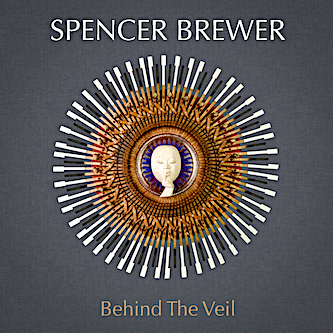 Well regarded for his 1980s works on Narada Records, California music icon Spencer Brewer released his 15th album Behind The Veil in early January 2023. Behind The Veil is actually the first Spencer Brewer album since his 2008 double CD set Cinematic. Behind the Veil is very much Americana in the best sense of the word, blending a highly refined composite of sonic components. The lead off track “Parasols In Paris” sets the tone remarkably well with its effective Continental European character. A number of musicians appear, including Nancy Rumble (English horn and Oboe), Paul McCandless (soprano sax) and strings from the Quartet San Francisco. Overall, Behind The Veil is a noteworthy instrumental solo piano New Age experience.
Well regarded for his 1980s works on Narada Records, California music icon Spencer Brewer released his 15th album Behind The Veil in early January 2023. Behind The Veil is actually the first Spencer Brewer album since his 2008 double CD set Cinematic. Behind the Veil is very much Americana in the best sense of the word, blending a highly refined composite of sonic components. The lead off track “Parasols In Paris” sets the tone remarkably well with its effective Continental European character. A number of musicians appear, including Nancy Rumble (English horn and Oboe), Paul McCandless (soprano sax) and strings from the Quartet San Francisco. Overall, Behind The Veil is a noteworthy instrumental solo piano New Age experience.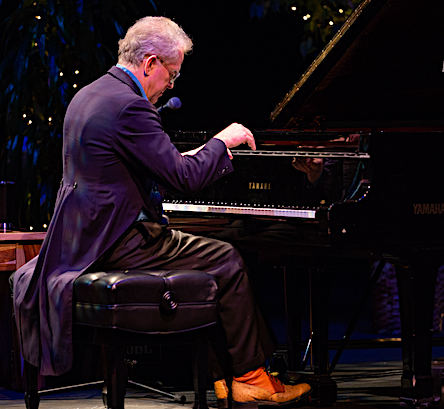 mwe3: Tell us about growing up in Texas. I read you were trained to play Boogie-Woogie piano by your Grandmother. How was she as a teacher and how good did you get playing that style of music? Afterwards what inspired you to move away from your family to the Golden State when you were young?
mwe3: Tell us about growing up in Texas. I read you were trained to play Boogie-Woogie piano by your Grandmother. How was she as a teacher and how good did you get playing that style of music? Afterwards what inspired you to move away from your family to the Golden State when you were young? 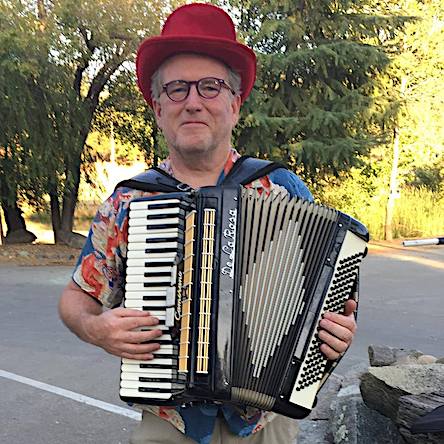 mwe3: When did you start seriously playing piano and composing? When did you realize you wanted to write and record music professionally?
mwe3: When did you start seriously playing piano and composing? When did you realize you wanted to write and record music professionally?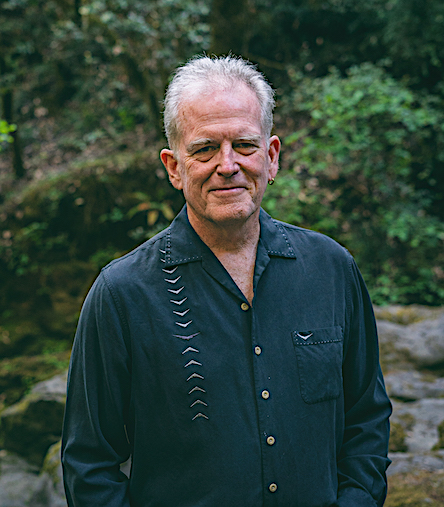 mwe3: When and where was Behind The Veil written and recorded? Are the tracks recently written and recorded or did you draw on your songbook of unreleased music and pick and choose as you developed the album concept?
mwe3: When and where was Behind The Veil written and recorded? Are the tracks recently written and recorded or did you draw on your songbook of unreleased music and pick and choose as you developed the album concept?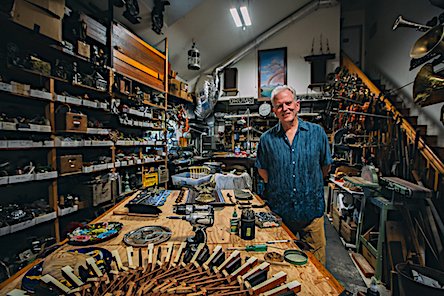 Spencer Brewer: The piano that I used for the record is a Yamaha C7 built in 1987. I've been a piano technician for 45 years and worked on over 20,000 pianos. This particular instrument has been a finely tuned and tweaked for specifically recording purposes over the decades. Over the last 25 years well over 100 piano albums have been recorded using this instrument. I also played synths on only two pieces because I really wanted the piano compositions themselves to stand out.
Spencer Brewer: The piano that I used for the record is a Yamaha C7 built in 1987. I've been a piano technician for 45 years and worked on over 20,000 pianos. This particular instrument has been a finely tuned and tweaked for specifically recording purposes over the decades. Over the last 25 years well over 100 piano albums have been recorded using this instrument. I also played synths on only two pieces because I really wanted the piano compositions themselves to stand out. 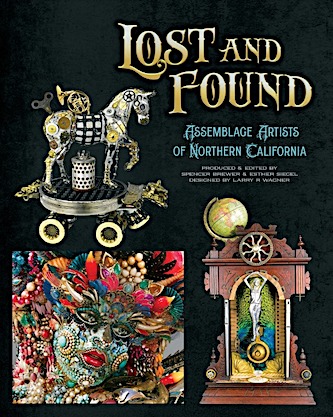
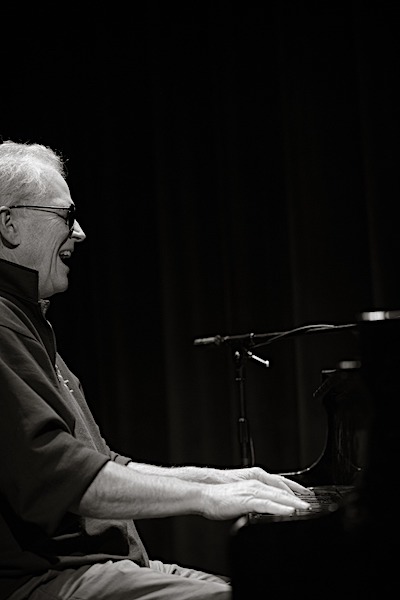 mwe3: “Behind The Veil”, the album title song, sound almost minimalistic compare to “Legend Of Rene Anguiano” and “Parasols In Paris”. Tell us about the title track, “Behind The Veil” and about choosing that song as the title track. Also, how about the album cover for Behind The Veil? What inspired the cover art and is it conceptual? Does it suggest secrecy, or something being hidden from view?
mwe3: “Behind The Veil”, the album title song, sound almost minimalistic compare to “Legend Of Rene Anguiano” and “Parasols In Paris”. Tell us about the title track, “Behind The Veil” and about choosing that song as the title track. Also, how about the album cover for Behind The Veil? What inspired the cover art and is it conceptual? Does it suggest secrecy, or something being hidden from view? 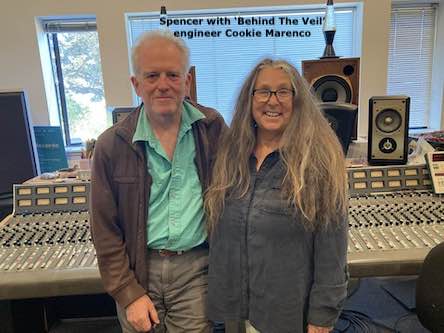 mwe3: What more can you add about “Where We Used To Play”? It’s another track with sentimental and effective key changes.
mwe3: What more can you add about “Where We Used To Play”? It’s another track with sentimental and effective key changes.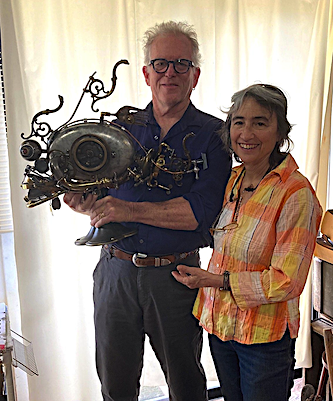 Spencer Brewer: Behind The Veil's release will be January 22, my wife's birthday. The album will be available on every streaming service there is as well as all digital platforms to be able to purchase it. There was a CD made that people will be able to purchase as well as be able to be downloaded which they can access at
Spencer Brewer: Behind The Veil's release will be January 22, my wife's birthday. The album will be available on every streaming service there is as well as all digital platforms to be able to purchase it. There was a CD made that people will be able to purchase as well as be able to be downloaded which they can access at 